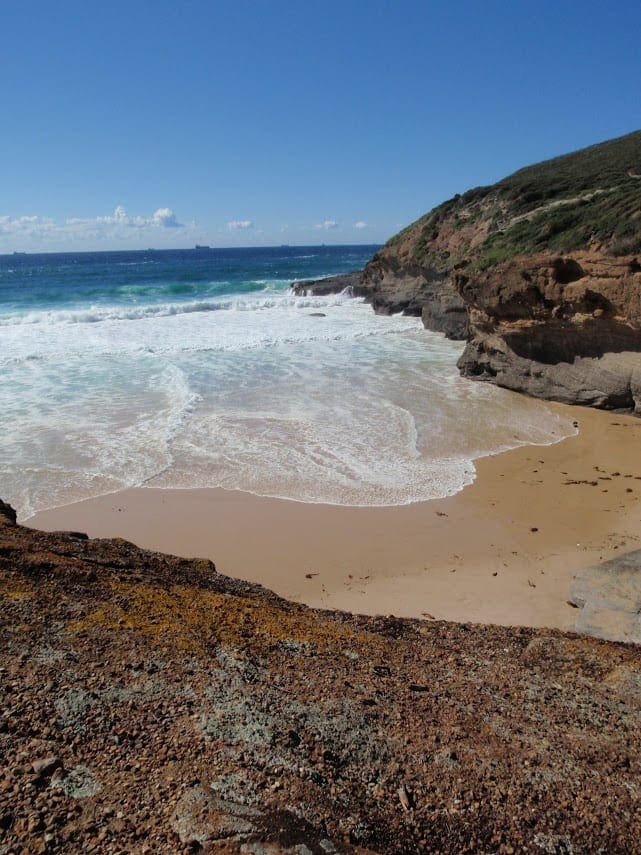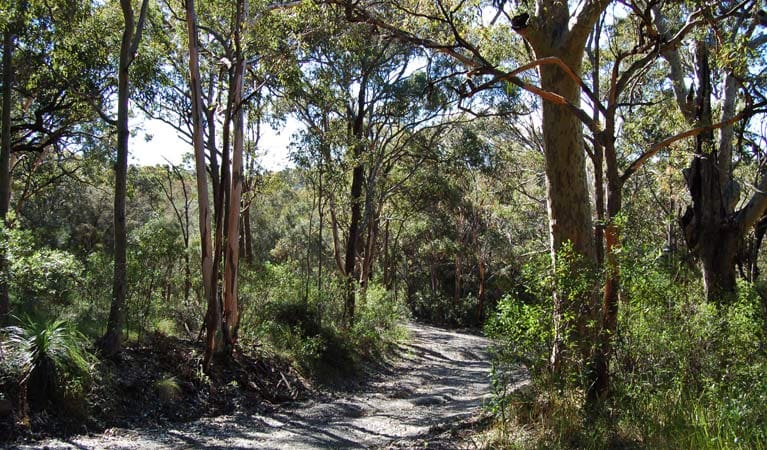Hike at a Glance
Max elevation: 0m
Min elevation: 0m
Total Ascent: 0m
Hike overview
Re-energise under a canopy of cabbage tree palms on this meandering, short loop through the rainforest of Munmorah.
You'll feel revived in the cool forest air surrounded by lush vegetation with shafts of sunlight streaming through palm fronds to guide your way. This enchanting walk is a visual feast, and isn't too challenging on the legs either. Look carefully and you may even spot some grey-headed flying foxes that feed in the cabbage tree palm forest during the summer.
Bring along supplies and take advantage of the tables at Palms picnic area, where the track begins and loops back to.
Tips
It's a good idea to put sunscreen on before you set out and remember to take a hat and drinking water.
Remember to take your binoculars if you want to bird watch.
Visit NSW National Parks and Wildlife Service for more information on this trail.
The longitude and latitude of the start and end points are approximately only and should not be used for navigation purposes. Please contact me if you know the correct coordinates.
Gallery
Got some great shots from this hike? Upload your photos here to inspire others and show off the beauty of the trail!
Click to view form >>
Submitting your photos doesn’t mean you lose ownership. You can be credited for your contributions, and you can request removal at any time.
Content use
Please don’t copy GPX files or content from this site to AllTrails or other platforms. Each trail has been personally mapped, documented, and refined to support Australia’s bushwalking and hiking community. While some details come from land managers, every listing reflects significant personal effort. This is a free, community-driven initiative—your respect helps keep it that way.
Walk map and GPX file
It looks like I don’t have a GPX file for this trail yet. If you have one to share, please email it to me! I’ll verify it against official maps before adding it to help other hikers have a safer, easier experience. Thanks for contributing to a better hiking resource.
Getting there
Getting to the trailhead: Munmorah State Conservation Area.
From the northern entrance of Munmorah State Conservation Area:Follow Blue Wren DriveTurn left into Campbell DriveTurn right into Frazer Beach Road and follow the road for 300mThere’s a small carpark on the left with access to the Palms circuit trackFrom the southern entrance of Munmorah State Conservation Area:Follow Birdie Beach Road and turn left onto Blue Wren DriveTurn right onto Campbell Drive and then right onto Frazer Beach RoadAfter about 300m, you’ll see a small carpark on the left with access to the Palms circuit track Parking Parking is available at the Palms picnic area. It can be a busy place on weekends, so parking may be limited.
Closest towns to this walk: Budgewoi, Cams Wharf, Canton Beach, Catherine Hill Bay, Chain Valley Bay, Colongra, Doyalson, Gorokan, Gwandalan, Lake Haven, Lake Munmorah, Mannering Park, Mooney Mooney, Morisset, Morrissett, Norah Head, Noraville, Nords Wharf, Sandy Beach, Shelly Beach, Summerland Point, Swansea, Toukley, Tuggerah, Wadalba, Wyee, Wyong, Wyongah
About the region
Pristine beaches, beautiful picnic and camping spots, first-class fishing and grand views are just a taste of what is on offer at Munmorah State Conservation Area. Munmorah State Conservation Area is a park for all seasons. Beautiful, sandy surf beaches, craggy coastlines, tranquil bays and dazzling ocean views make this a place to return to time and again. Bushwalking, camping, fishing, surfing and swimming are just some of the many activities you can enjoy at Munmorah. Bring your binoculars to spot passing whales in winter and keep an eye out for some of the incredible bird species that call this park home you might see a bar-shouldered dove in the coastal dunes or the southern emu wren on the low coastal heaths. Part of the Sydney Basin, Munmorah State Conservation Area illustrates the impressive geology of the region the views are spectacular and it's no wonder, they've been millions of years in the making.
Similar walks nearby
Looking for more walks in or near Munmorah State Conservation Area? Try these trails with a similar difficulty grade.
Track grade
Grade 4 (Hard) - Challenging Walks for Experienced Walkers: Grade 4 on the AWTGS signifies challenging walking tracks. Bushwalking experience is recommended for these tracks, which may be long, rough, and very steep. Directional signage may be limited, requiring a good sense of navigation. These walks are suited for experienced walkers who are comfortable with steeper inclines, rougher terrain, and potentially longer distances.
Explore safe
Plan ahead and hike safely! Carry enough water, pack layers for changing conditions, and bring safety gear like a torch, PLB, and reliable communication device. Check official sources for trail updates, closures, and access requirements, and review local weather and bushfire advice. Most importantly, share your plans with someone before you go. Being prepared makes for a safer and more enjoyable hike! Stay Safe, Explore More, and Always #ExploreSafe.
Packing checklists
What you carry in your pack depends on factors like weather, terrain, and your adventure type. Not sure what to bring? My free planning, food, and packing checklists are a great starting point, covering day hikes, overnight trips, and multi-day adventures. Use them to customise your kit and always prioritise safety.
Let someone know
Before heading out, take a moment to fill out your trip intentions form. It’s a quick way to share your hike details with family or friends. If something goes wrong, they can notify emergency services, ensuring a faster response and peace of mind. Stay safe and enjoy your adventure
Suggest an edit
Spotted a change on this trail? Maybe there are new features, the route has shifted, or the trail is permanently closed. Whatever the update, I’d love your input. Your feedback helps fellow hikers stay informed and ensures that our trail info stays fresh and reliable.
Acknowledgement of Country
Trail Hiking Australia acknowledges the Traditional Owners of the lands on which we hike and pay respects to their Elders, past and present, and we acknowledge the First Nations people of other communities who may be here today.






